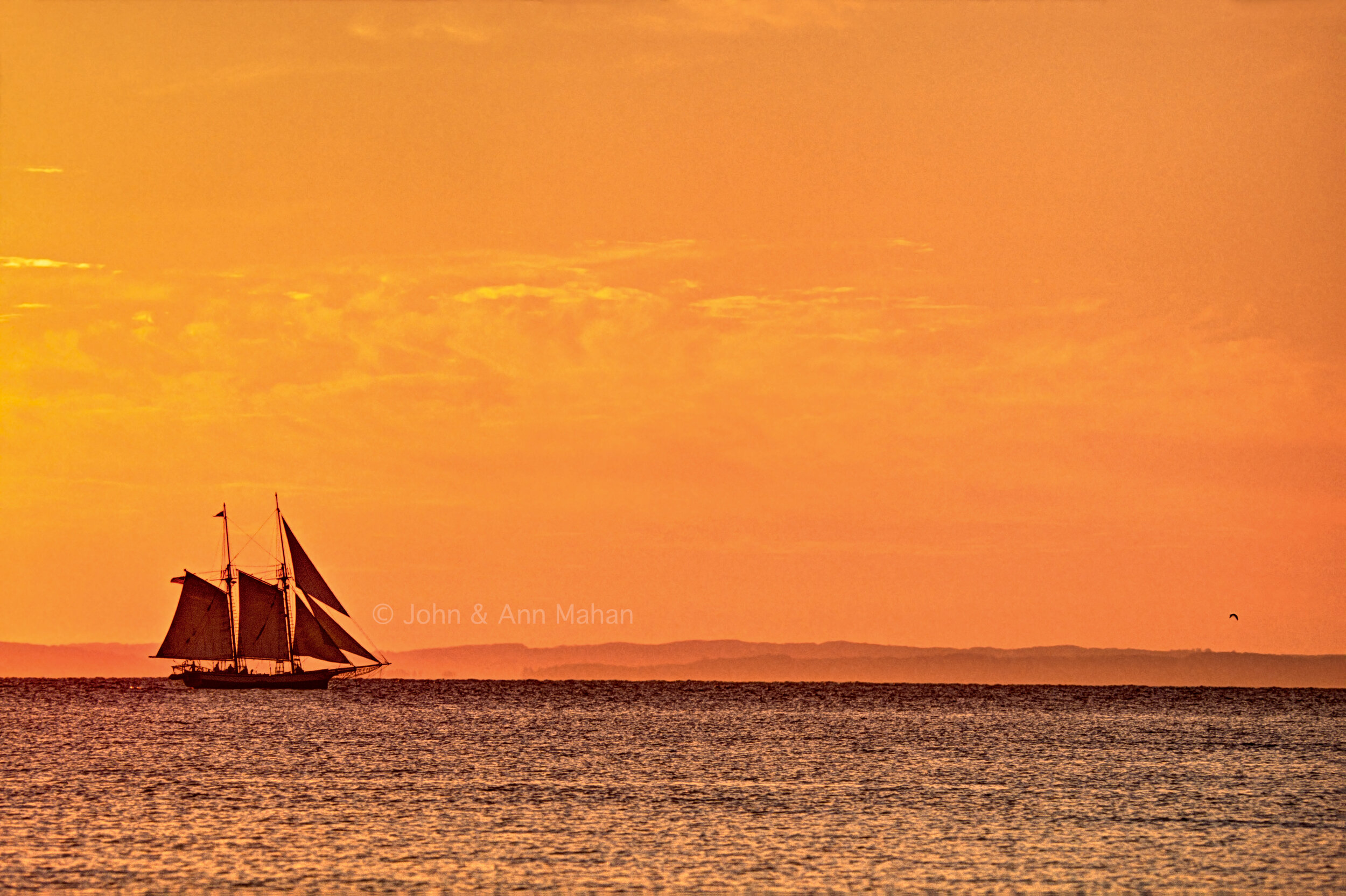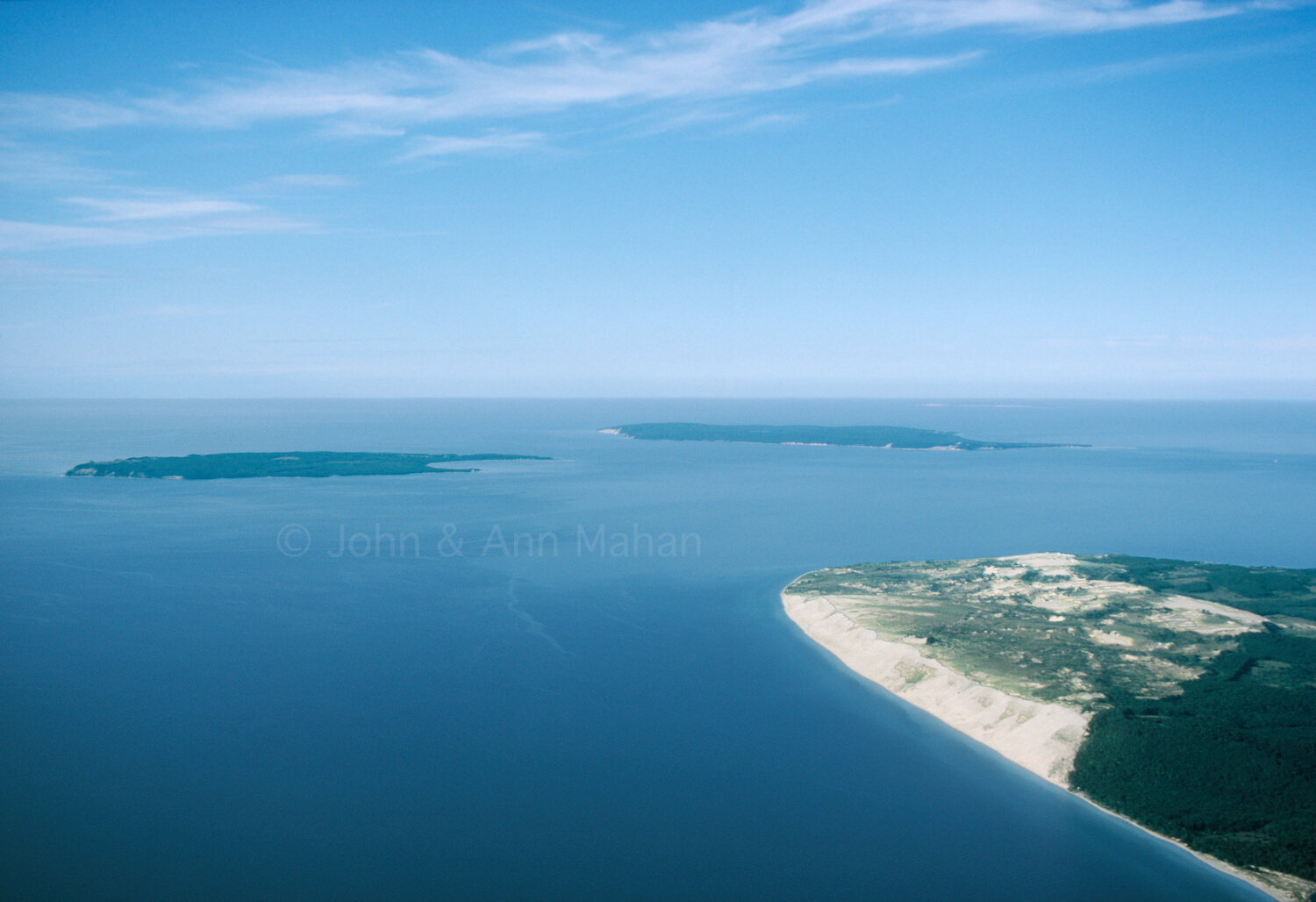
The Great Lakes
The Great Lakes ecosystem encompasses Lakes Superior, Michigan, Huron, Erie, and Ontario — five inland seas of such beauty and magnitude that they are unique in all the world. Containing one-fifth of the world's supply of surface fresh water, they are the largest and most lasting evidence of the comings and goings of the great glaciers.
Here, sitting like a large jewel on the lapel of the North American continent, is a water-based ecosystem of a grand scale. The watershed's 300,000 square miles stretch over more than 10 degrees of longitude and 18 degrees of latitude, while taking in three major forest types and the industrial heartlands of two nations. A freighter taking the most direct water route from Duluth, at the western end of Lake Superior, to Tibbetts Point, where Lake Ontario flows into the St. Lawrence River, steams across 1,154 miles of fresh water and over depths plunging to as much as 1,333 feet.
These vast inland seas are bounded by a 10,000 mile coastline that wanders through the jurisdiction of two federal governments, eight states and one province. Ancient bare-bones bedrock of the Canadian Shield rises and falls, juts and crumbles across the northern edge of the lakes. The largest expanse of freshwater dunes in the world rolls and drifts along Lake Michigan's eastern shores. Niagara Falls thunders over the dolomite escarpment that, in other areas, bumps up against the Canadian Shield, and reappears as the islands and peninsulas arcing across northern Lakes Michigan and Huron. Dotted here and there are archipelagoes and remote islands, small dunes and sand beaches, quiet secluded coves and inlets. Some have become busy human playgrounds, while others continue on as separate time capsules, nearly oblivious to the rush and press of the mainland world. And everywhere water flows and crashes, seeps and erodes. The Great Lakes ecosystem was born of water and continues to be shaped, defined and maintained by this most yielding, yet most powerful, of substances.
Native Americans' ancestors advanced into the Great Lakes on the heels of the last receding glaciation. Descendants of these original people have a long perspective born of their culture's several-thousand-year relationship with the area. After millennia of living in the watershed, they watched a procession of newcomers, European explorers, arrive to "discover" their homeland.
Ten years before the Pilgrims made landfall at Plymouth Rock, Champlain's young scout, Etienne Brulé, stood with his Huron Indian guides on the shore of Lake Huron's Georgian Bay. Jean Nicolet, another of Champlain's explorers, paddled west into Lake Michigan from the Straits of Mackinac in 1634. Both of Champlain's intrepid young men were looking for a western route to China. And both were surprised by what they found — "Mers Douces", "Sweet Seas" — leading to treasures far beyond their original expectations.
Soon voyageurs were paddling and singing their way into the upper lakes and beyond. They left with trade goods and returned with furs — sparking over a century of feverish competition between France, Great Britain, and eventually the new United States, to monopolize the wealth that swam around on the backs of beavers in nearly every pond and waterway in the interior of the new continent.
By the late 1800s and early 1900s, the Great Lakes area had become the industrial center and crossroads of the North American continent, providing copper, iron, lumber and cheap transportation. In the last half of the 20th century, the still wild and beautiful natural areas around much of the Great Lakes were discovered by city-weary souls seeking renewal and revitalization. After nearly three centuries of extractive use (taking away what we want) the human species is beginning to see the Great Lakes ecosystem as a valuable natural resource in itself — a much greater treasure than we originally came looking for.




